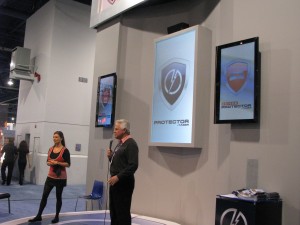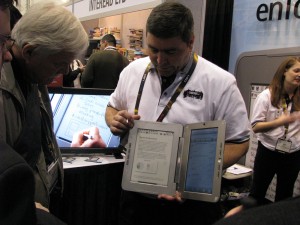Yesterday at CES I got a demo of a soon-to-be-released product aimed at parents concerned about their kids. There are two modules. Mobile Protector is a phone app they receive along with their first mobile phone. It allows the parents to control what numbers they dial and receive, whether or not they can text and under what restrictions. If they like, the parents can serve as a switchboard: incoming calls come to them and they can answer, decline or forward to their kid’s phone.
When the child reaches driving age, a vehicle mounted console called Driver Protector is added. Parents will now know where the young driver is at all times and they can set up a “Geofence” to be sure the kids are staying within an approved area. If the kid strays, or texts while driving, the phone can shut down automatically. They can tell if the kid is driving too fast, and if they are in an accident there is an alert triggered by sudden deceleration or the deployment of an air bag.

The interesting thing is that these products have been developed and will be released by Taser. Yeah, that Taser. I asked the booth guy how this fit with the weaponry and he said Taser’s motto is “protect life”—as in, using our product will help you protect the things in life that matter; as in, if you mess up we’ll tase you but hopefully not kill you.
I see this cutting two ways in the marketplace depending on how it’s marketed and received. Best case is that kids think it’s cool: mom and dad have given me my own Taser, sorta, to keep me safe. Worst case is they think it’s an onerous form of parental subjugation. Let’s see how it plays out.
